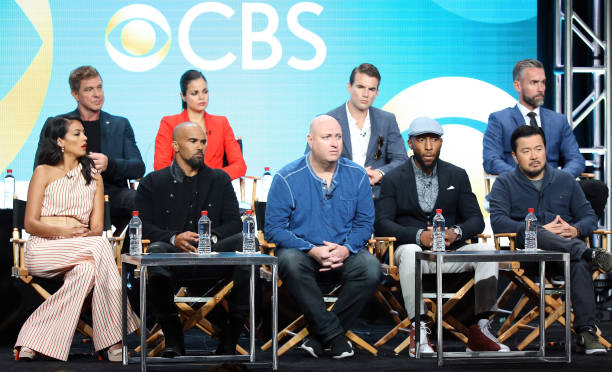
Introduction
When you think of S.W.A.T., you might envision intense action scenes, high-stakes rescues, and gripping drama. But there’s so much more to this series than just entertainment. S.W.A.T. actively engages with modern social issues, reflecting the complexities of diversity in law enforcement and the communities they serve. In this article, we’ll explore how S.W.A.T. addresses these critical topics and why it matters in today’s world.
Understanding Diversity in Law Enforcement
Why Diversity Matters
Diversity in law enforcement isn’t just a buzzword; it’s essential for effective policing. A diverse police force better represents the communities they serve, fostering trust and understanding. This representation is crucial in building strong community relations, especially in a world where tensions between law enforcement and citizens often run high.
The Evolution of Police Representation
Historically, police departments have lacked diversity. However, recent movements advocating for racial equality and justice have sparked a shift, emphasizing the importance of inclusivity in hiring practices. S.W.A.T. reflects this evolution, showcasing a diverse team that embodies various backgrounds and perspectives.
The S.W.A.T. Team: A Microcosm of Society
A Diverse Cast of Characters
One of the most striking aspects of S.W.A.T. is its commitment to diversity. The series features a range of characters from different ethnicities, genders, and backgrounds, each contributing unique viewpoints and experiences.
Key Characters and Their Roles
- Hondo Harrelson: As the team leader, Hondo navigates the complexities of his role while representing the African American community.
- Jessica Cortez: Portrayed as a strong, competent female officer, Jessica challenges traditional gender roles within law enforcement.
- David “Deacon” Kay: A family man who emphasizes the importance of balancing personal life with professional duty.
Real-Life Inspirations
The characters often draw inspiration from real-life officers, reinforcing the idea that diversity isn’t just a fictional element but a vital component of modern policing.
Addressing Social Issues Through Storylines
Tackling Systemic Racism
S.W.A.T. doesn’t shy away from difficult topics. Episodes often delve into issues like systemic racism, police brutality, and community relations. By presenting these themes, the series sparks important conversations about the challenges facing law enforcement today.
The Importance of Dialogue
The show emphasizes open dialogue between officers and community members. It often depicts characters engaging with residents to discuss concerns, illustrating that communication is key to resolving conflicts and building trust.
Community Engagement and Outreach
Building Trust with the Community
S.W.A.T. emphasizes community engagement as a fundamental part of policing. The series showcases initiatives where the team participates in community events, fostering positive interactions between officers and citizens.
Real-World Parallels
These portrayals mirror real-life community policing efforts, where officers engage in outreach programs aimed at improving relationships with the neighborhoods they serve.
Highlighting the Role of Mental Health
In several episodes, the show addresses mental health issues, both for officers and community members. It acknowledges the stress and trauma that can arise from high-stakes policing and promotes the importance of mental health support.
The Impact of Representation on Screen
Changing Perceptions of Law Enforcement
By featuring a diverse cast and addressing social issues, S.W.A.T. challenges stereotypes about police officers. The series presents a more nuanced view of law enforcement, showcasing officers as community partners rather than just enforcers.
Inspiring Future Generations
Diversity in media has the power to inspire young viewers. Seeing characters from various backgrounds in positive roles encourages children to pursue careers in law enforcement, fostering a new generation of inclusive and empathetic officers.
The Role of Women in S.W.A.T.
Empowering Female Characters
S.W.A.T. features strong female characters who break the mold of traditional roles in law enforcement. Jessica Cortez, for instance, is portrayed as both competent and authoritative, challenging gender stereotypes.
Realizing Gender Equality in Policing
The series aligns with ongoing conversations about gender equality within the police force. By showcasing capable women in leadership positions, S.W.A.T. helps normalize female representation in traditionally male-dominated fields.
Conclusion
S.W.A.T. is more than just an action-packed series; it serves as a platform for discussing important social issues, particularly around diversity and community relations. By addressing these topics head-on, the show not only entertains but also educates viewers about the complexities of modern policing. In a world where conversations about race and representation are more important than ever, S.W.A.T. stands out as a vital cultural touchstone, promoting understanding and empathy.
FAQs
1. How does S.W.A.T. address diversity?
S.W.A.T. features a diverse cast of characters from various backgrounds and emphasizes community engagement, showcasing the importance of representation in law enforcement.
2. Why is diversity important in policing?
Diversity in policing helps build trust between law enforcement and the community, leading to better communication and more effective policing strategies.
3. What social issues does S.W.A.T. explore?
The series tackles systemic racism, police brutality, mental health, and community relations, providing a platform for meaningful discussions.
4. How are female characters portrayed in S.W.A.T.?
Female characters in S.W.A.T., like Jessica Cortez, are depicted as strong, competent, and capable leaders, challenging traditional gender stereotypes in law enforcement.
5. What impact does S.W.A.T. have on public perception of police?
By showcasing diverse characters and addressing social issues, S.W.A.T. helps change perceptions of police officers, presenting them as community partners rather than just enforcers.
